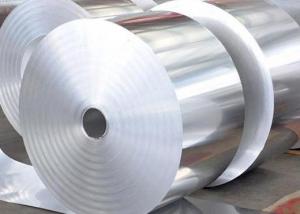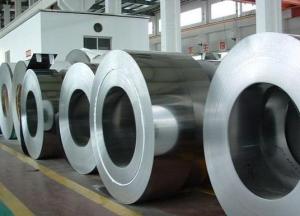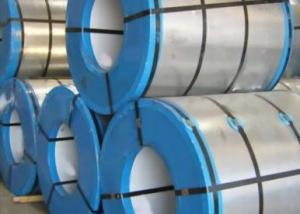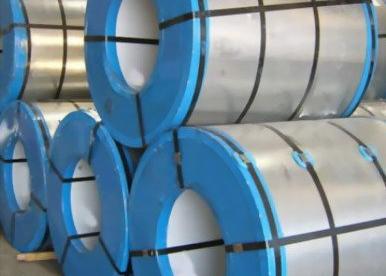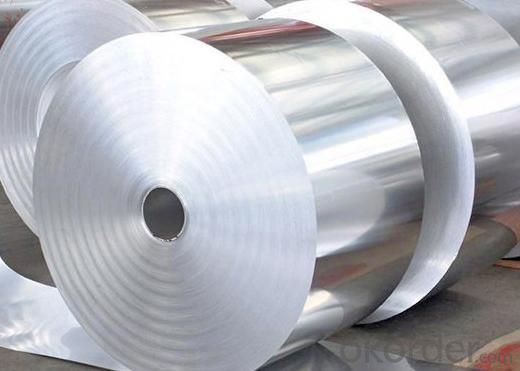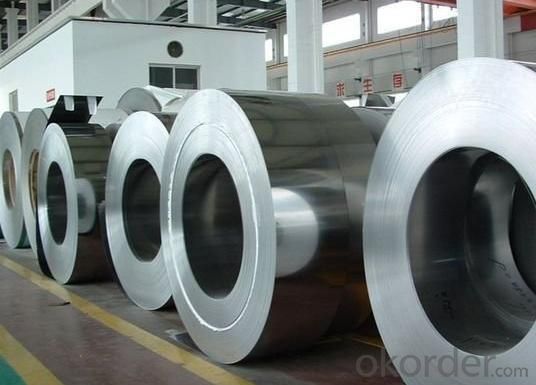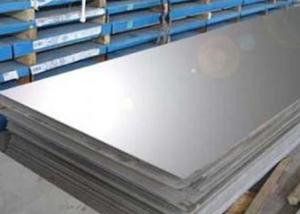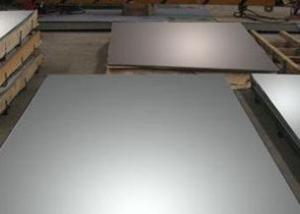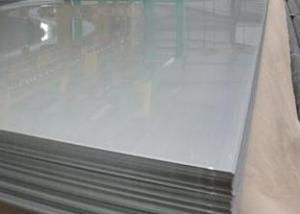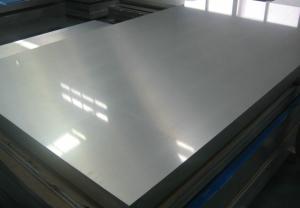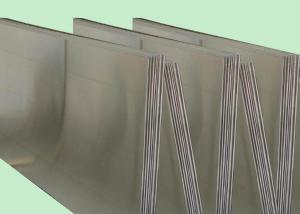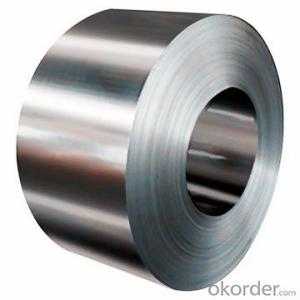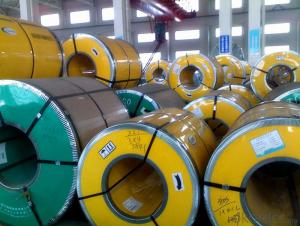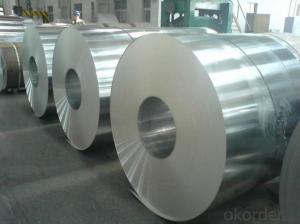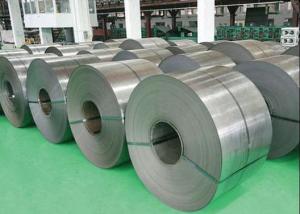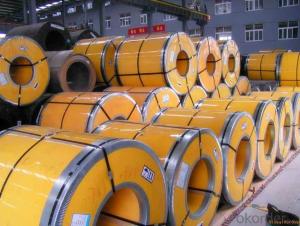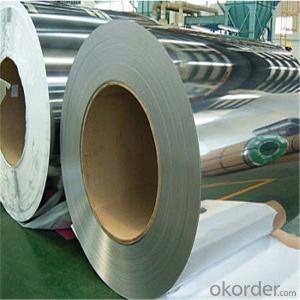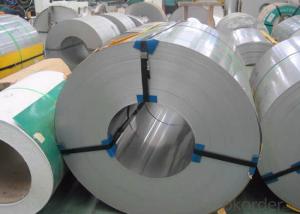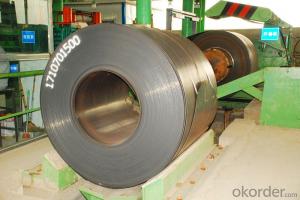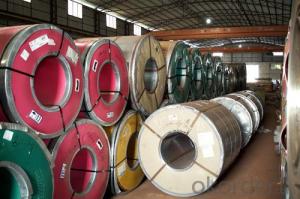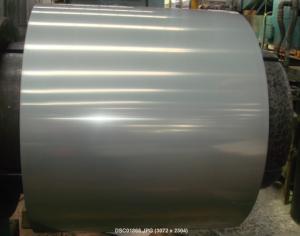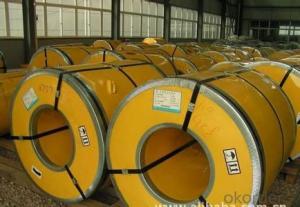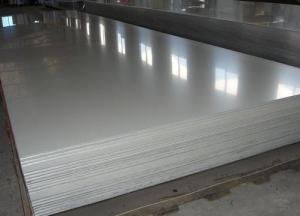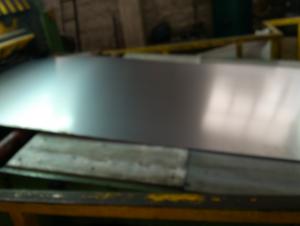316Ti Stainless Steel Coil
- Loading Port:
- China Main Port
- Payment Terms:
- TT or LC
- Min Order Qty:
- 1 Ton m.t.
- Supply Capability:
- 1000 Tons Per Month m.t./month
OKorder Service Pledge
OKorder Financial Service
You Might Also Like
316Ti Stainless Steel Coil
1. Chemical composition
|
C |
Si |
Mn |
P |
S |
Ni |
Ti |
Mo |
Cr |
|
Max0.08 |
max1.00 |
max2.00 |
max0.035 |
max0.03 |
11.00-14.00 |
5*C%-0.70 |
1.8-2.5 |
16.00-19.00 |
2. Mechanical properties
|
Yield Strength |
Tensile |
Elongation |
Hardness (HV) |
Hardness (HRB) |
|
≥205 |
≥520 |
≥40 |
≤200 |
≤90 |
3. Standard: AISI, ASTM, GB, EN, DIN, JIS
4. Surface: 2B, NO.1, BA, NO.4, Hairline, SB, Mirror finish, Anti-skid, Cherkered etc.
5. Size: Thickness: 0.3-3mm (cold rolled), 3-40mm (hot rolled)
Width: 1000mm or 1219mm or 1240mm for cold rolled, 1500mm for hot rolled.
Length: As customers' request.
6. MOQ: 1 Ton
7. Payment terms: T/T or L/C
8. Packing: Seaworthy package with wooden or Iron pallets with the paper and the steel strip, or as customers' request.
9. Delivery time: Usually about 7 days after we confirming the order, or according to your quantity.
If you have any question or demand, pls feel free to contact me.
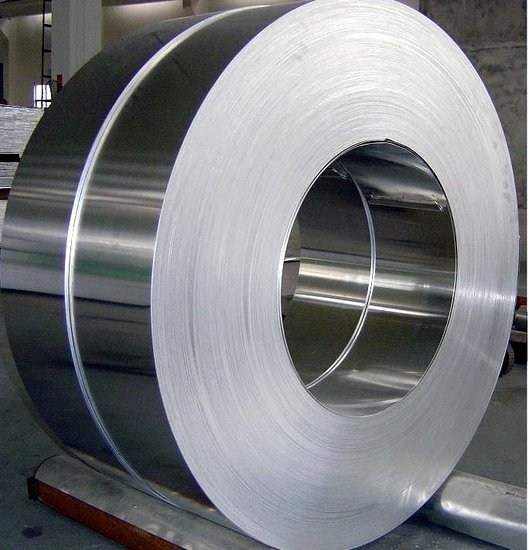
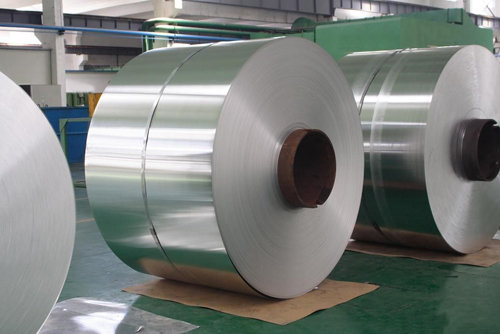
- Q: 301 stainless steel belt and 304 stainless steel belt, which quality is good?
- 304 good soft hard 301 good 304 some hardness is not to Yi Teng metal
- Q: Can stainless steel strips be used in the power generation industry?
- Yes, stainless steel strips can be used in the power generation industry. Stainless steel has excellent corrosion resistance, high strength, and heat resistance, making it suitable for various applications in this industry, including turbine blades, heat exchangers, and condensers. Its durability and resistance to oxidation make it an ideal choice for components that are exposed to high temperatures and corrosive environments in power plants.
- Q: Can stainless steel strips be used in telecommunications applications?
- Telecommunications applications can indeed make use of stainless steel strips. The reason for this is that stainless steel possesses exceptional corrosion resistance and durability, rendering it appropriate for diverse industries, including telecommunications. Its usefulness in telecommunications extends to various applications such as cable trays, cable conduits, antenna brackets, enclosures, and support structures. Due to their high strength-to-weight ratio, ability to withstand extreme temperatures, and capacity for electromagnetic interference (EMI) shielding, stainless steel strips are frequently favored in telecommunications. Furthermore, they can be readily fabricated and tailored to meet specific needs, making them a versatile option for telecommunications applications.
- Q: Are stainless steel strips resistant to embrittlement?
- Yes, stainless steel strips are generally resistant to embrittlement. Embrittlement refers to the loss of ductility and the development of brittleness in a material, which can lead to cracking or fracturing under stress. Stainless steel is an alloy that contains a minimum of 10.5% chromium, which forms a protective oxide layer on the surface of the material. This oxide layer provides excellent corrosion resistance and also helps to prevent embrittlement. Additionally, stainless steel contains other alloying elements such as nickel and molybdenum, which further enhance its resistance to embrittlement. These alloying elements help to maintain the structure and integrity of the material, even under extreme conditions or exposure to high temperatures. However, it is important to note that certain factors can still lead to embrittlement in stainless steel strips. For example, exposure to very high temperatures (above the recommended operating range) or prolonged exposure to certain chemicals can cause embrittlement. Additionally, improper heat treatment or welding processes can also affect the material's resistance to embrittlement. Therefore, while stainless steel strips are generally resistant to embrittlement, it is crucial to consider the specific operating conditions and ensure proper handling, heat treatment, and maintenance to maintain the material's integrity.
- Q: What are the common industry standards for stainless steel strips?
- The common industry standards for stainless steel strips include ASTM A240, ASTM A666, EN 10088-2, and JIS G4305. These standards specify the composition, mechanical properties, dimensions, and tolerances for stainless steel strips, ensuring consistency and quality across the industry.
- Q: How does stainless steel strip perform in corrosive environments?
- Stainless steel strip performs exceptionally well in corrosive environments due to its inherent resistance to corrosion. The presence of chromium in stainless steel forms a passive layer on the surface, which acts as a protective barrier against corrosive agents. This characteristic makes stainless steel strip highly durable and reliable in various corrosive conditions, ensuring minimal or no degradation over time.
- Q: Can stainless steel strips be customized according to specific requirements?
- Yes, stainless steel strips can be customized according to specific requirements. Stainless steel is a versatile material that can be easily formed, cut, and manipulated into various shapes and sizes. This allows for customization to meet specific requirements such as width, thickness, length, and surface finish. Additionally, stainless steel strips can be further customized through processes like slitting, edge conditioning, and surface treatments to enhance their performance and appearance. Whether it's for industrial, architectural, or decorative purposes, stainless steel strips can be tailored to meet the exact specifications and demands of a particular application.
- Q: Can stainless steel strips be used in the petrochemical industry?
- Certainly, the petrochemical industry finds stainless steel strips to be a valuable asset. The exceptional corrosion resistance of stainless steel renders it suitable for a wide range of applications in this sector. Given that petrochemical processes often involve the manipulation of various corrosive chemicals, gases, and liquids, stainless steel strips are frequently employed in the construction of storage tanks, pipelines, heat exchangers, and other necessary equipment. The indispensability of corrosion resistance in these structures cannot be overstated. Moreover, the high strength and durability of stainless steel endow it with the ability to withstand the demanding conditions of the petrochemical industry, including high temperatures and pressures. Consequently, it is safe to conclude that stainless steel strips are the preferred material in the petrochemical sector due to their corrosion resistance, strength, and longevity.
- Q: Can stainless steel strips be used in automotive industries?
- Yes, stainless steel strips can be used in automotive industries. Stainless steel offers excellent corrosion resistance, durability, and high strength-to-weight ratio, making it suitable for various automotive applications such as exhaust systems, fuel tanks, decorative trims, and structural components.
- Q: Are stainless steel strips resistant to chemicals?
- Yes, stainless steel strips are generally resistant to chemicals. They have a high level of corrosion resistance, making them suitable for various chemical environments. However, the degree of resistance may vary depending on the specific type and grade of stainless steel used.
1. Manufacturer Overview
| Location | Guangzhou,China |
| Year Established | 2001 |
| Annual Output Value | Above US$0.5 Million |
| Main Markets | Southeast Asia, Europe |
| Company Certifications | ISO 9001:2008; |
2. Manufacturer Certificates
| a) Certification Name | |
| Range | |
| Reference | |
| Validity Period |
3. Manufacturer Capability
| a) Trade Capacity | |
| Nearest Port | Shanghai |
| Export Percentage | 30% |
| No.of Employees in Trade Department | 10 People |
| Language Spoken: | English;Chinese |
| b) Factory Information | |
| Factory Size: | Above 30,000 square meters |
| No. of Production Lines | Above 7 |
| Contract Manufacturing | OEM Service Offered;Design Service Offered |
| Product Price Range | Average |
Send your message to us
316Ti Stainless Steel Coil
- Loading Port:
- China Main Port
- Payment Terms:
- TT or LC
- Min Order Qty:
- 1 Ton m.t.
- Supply Capability:
- 1000 Tons Per Month m.t./month
OKorder Service Pledge
OKorder Financial Service
Similar products
Hot products
Hot Searches
Related keywords
